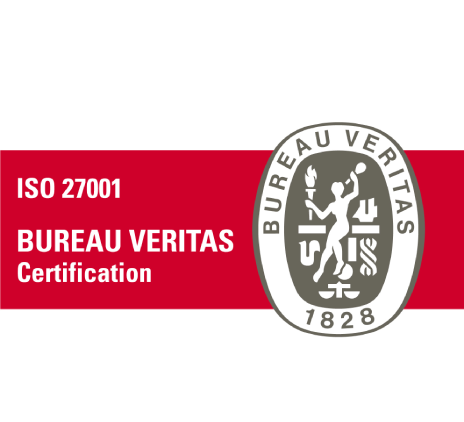-
Other audit services
We help clients with the application and use of foreign financial aid of EU and other funds and help prepare financial reports.
-
Audit calculator
The calculator will answer if the company's sales revenue, assets or number of employees exceed the limit of an inspection or audit.
-
Payroll and related services
We perform payroll accounting for companies whether they employ a few or hundreds of employees.
-
Tax accounting
Grant Thornton Baltic's experienced tax specialists support accountants and offer reasonable and practical solutions.
-
Reporting
We prepare annual reports in a timely manner. We help to prepare management reports and various mandatory reports.
-
Consolidation of financial statements
Our experienced accountants and advisors help you prepare consolidation tables and make the consolidation process more efficient.
-
Consultancy and temporary staff
Our experienced specialists advise on more complex accounting transactions, rectify poor historic accounting, and offer the temporary replacement of an accountant.
-
Outsourced CFO service
Our CFO service is suitable for companies of all sizes and in all industries. We offer services to our clients in the required amount and competences.
-
Assessment of accounting processes
We help companies to implement accounting practices that are in compliance with local and international standards.
-
Accounting services for small businesses
We offer affordable service for small businesses. We help organize processes as smartly and cost-effectively as possible.
-
Cryptocurrency accounting
We keep up with blockchain technology to serve and advise crypto companies. We are supported by a network of colleagues in 130 countries.
-
Trainings and seminars
Our accountants have experience in all matters related to accounting and reporting. We offer our clients professional training according to their needs.

-
Business advisory
We offer legal support to both start-ups and expanding companies, making sure that all legal steps are well thought out in detail.
-
Fintech advisory
Our specialists advise payment institutions, virtual currency service providers and financial institutions.
-
Corporate advisory
We advise on legal, tax and financial matters necessary for better management of the company's legal or organizational structure.
-
Transaction advisory
We provide advice in all aspects of the transaction process.
-
Legal due diligence
We thoroughly analyze the internal documents, legal relations, and business compliance of the company to be merged or acquired.
-
In-house lawyer service
The service is intended for entrepreneurs who are looking for a reliable partner to solve the company's day-to-day legal issues.
-
The contact person service
We offer a contact person service to Estonian companies with a board located abroad.
-
Training
We organize both public trainings and tailor made trainings ordered by clients on current legal and tax issues.
-
Whistleblower channel
At Grant Thornton Baltic, we believe that a well-designed and effective reporting channel is an efficient way of achieving trustworthiness.

-
Business model or strategy renewal
In order to be successful, every company, regardless of the size of the organization, must have a clear strategy, ie know where the whole team is heading.
-
Marketing and brand strategy; creation and updating of the client management system
We support you in updating your marketing and brand strategy and customer management system, so that you can adapt in this time of rapid changes.
-
Coaching and development support
A good organizational culture is like a trump card for a company. We guide you how to collect trump cards!
-
Digital services
Today, the question is not whether to digitize, but how to do it. We help you develop and implement smart digital solutions.
-
Sales organisation development
Our mission is to improve our customers' business results by choosing the right focuses and providing a clear and systematic path to a solution.
-
Business plan development
A good business plan is a guide and management tool for an entrepreneur, a source of information for financial institutions and potential investors to make financial decisions.
-
Due diligence
We perform due diligence so that investors can get a thorough overview of the company before the planned purchase transaction.
-
Mergers and acquisitions
We provide advice in all aspects of the transaction process.
-
Valuation services
We estimate the company's market value, asset value and other asset groups based on internationally accepted methodology.
-
Forensic expert services
Our experienced, nationally recognized forensic experts provide assessments in the economic and financial field.
-
Business plans and financial forecasts
The lack of planning and control of cash resources is the reason often given for the failure of many businesses. We help you prepare proper forecasts to reduce business risks.
-
Outsourced CFO service
Our CFO service is suitable for companies of all sizes and in all industries. We offer services to our clients in the required amount and competences.
-
Reorganization
Our experienced reorganizers offer ways to overcome the company's economic difficulties and restore liquidity in order to manage sustainably in the future.
-
Restructuring and reorganisation
We offer individual complete solutions for reorganizing the structure of companies.
-
Corporate taxation
We advise on all matters related to corporate taxation.
-
Value added tax and other indirect taxes
We have extensive knowledge in the field of VAT, excise duties and customs, both on the national and international level.
-
International taxation
We advise on foreign tax systems and international tax regulations, including the requirements of cross-border reporting.
-
Transfer pricing
We help plan and document all aspects of a company's transfer pricing strategy.
-
Taxation of transactions
We plan the tax consequences of a company's acquisition, transfer, refinancing, restructuring, and listing of bonds or shares.
-
Taxation of employees in cross-border operations
An employee of an Estonian company abroad and an employee of a foreign company in Estonia - we advise on tax rules.
-
Tax risk audit
We perform a risk audit that helps diagnose and limit tax risks and optimize tax obligations.
-
Representing the client in Tax Board
We prevent tax problems and ensure smooth communication with the Tax and Customs Board.
-
Taxation of private individuals
We advise individuals on personal income taxation issues and, represent the client in communication with the Tax and Customs Board.
-
Pan-Baltic tax system comparison
Our tax specialists have prepared a comparison of the tax systems of the Baltic countries regarding the taxation of companies and individuals.
-
Internal audit
We assist you in performing the internal audit function, performing internal audits and advisory work, evaluating governance, and conducting training.
-
Internal Audit in the Financial Services Sector
We provide internal audit services to financial sector companies. We can support the creation of an internal audit function already when applying for a sectoral activity license.
-
Audit of projects
We conduct audits of projects that have received European Union funds, state aid, foreign aid, or other grants.
-
Prevention of money laundering
We help to prepare a money laundering risk assessment and efficient anti-money laundering procedures, conduct internal audits and training.
-
Risk assessment and risk management
We advise you on conducting a risk assessment and setting up a risk management system.
-
Custom tasks
At the request of the client, we perform audits, inspections and analyzes with a specific purpose and scope.
-
External Quality Assessment of the Internal Audit Activity
We conduct an external evaluation of the quality of the internal audit or provide independent assurance on the self-assessment.
-
Whistleblowing and reporting misconduct
We can help build the whistleblowing system, from implementation, internal repairs and staff training to the creation of a reporting channel and case management.
-
Information security management
We provide you with an information security management service that will optimise resources, give you an overview of the security situation and ensure compliance with the legislation and standards.
-
Information security roadmap
We analyse your organisation to understand which standards or regulations apply to your activities, identify any gaps and make proposals to fix them.
-
Internal audit of information security
Our specialists help detect and correct information security deficiencies by verifying an organization's compliance with legislation and standards.
-
Third party management
Our specialists help reduce the risks associated with using services provided by third parties.
-
Information security training
We offer various training and awareness building programmes to ensure that all parties are well aware of the information security requirements, their responsibilities when choosing a service provider and their potential risks.
-
Digital Operational Resilience Act (DORA)
We will help you create a DORA implementation model that meets your company's needs and ensures that you meet the January 2025 deadline.

-
ESG advisory
We help solve issues related to the environment, social capital, employees, business model and good management practices.
-
ESG audit
Our auditors review and certify sustainability reports in line with international standards.
-
Sustainable investments
We help investors conduct analysis of companies they’re interested in, examining environmental topics, corporate social responsibility and good governance practices.
-
Sustainable tax behaviour
Our international taxation specialists define the concept of sustainable tax behaviour and offer services for sustainable tax practices.
-
ESG manager service
Your company doesn’t necessarily need an in-house ESG manager. This role can also be outsourced as a service.

-
Recruitment services – personnel search
We help fill positions in your company with competent and dedicated employees who help realize the company's strategic goals.
-
Recruitment support services
Support services help to determine whether the candidates match the company's expectations. The most used support services are candidate testing and evaluation.
-
Implementation of human resource management processes
We either assume a full control of the launch of processes related to HR management, or we are a supportive advisory partner for the HR manager.
-
Audit of HR management processes
We map the HR management processes and provide an overview of how to assess the health of the organization from the HR management perspective.
-
HR Documentation and Operating Model Advisory Services work
We support companies in setting up HR documentation and operational processes with a necessary quality.
-
Employee Surveys
We help to carry out goal-oriented and high-quality employee surveys. We analyse the results, make reports, and draw conclusions.
-
HR Management outsourcing
We offer both temporary and permanent/long-term HR manager services to companies.

-
Digital strategy
We help assess the digital maturity of your organization, create a strategy that matches your needs and capabilities, and develop key metrics.
-
Intelligent automation
We aid you in determining your business’ needs and opportunities, as well as model the business processes to provide the best user experience and efficiency.
-
Business Intelligence
Our team of experienced business analysts will help you get a grip on your data by mapping and structuring all the data available.
-
Cybersecurity
A proactive cyber strategy delivers you peace of mind, allowing you to focus on realising your company’s growth potential.
-
Innovation as a Service
On average, one in four projects fails and one in two needs changes. We help manage the innovation of your company's digital solutions!

How to hold on to good employees? For starters, understand that employees may consider leaving, competitors try to outbid you for them, and employees have their own personal career goals.
“If one starts thinking about employee turnover when the person is already on the way out the door, it’s too late. Managers and human resources staff have to constantly have on their desk a plan for keeping their employees,” said head of Swedbank Estonia’s career centre Grete Kotkas on the Äripäev newspaper’s radio show “Õigusruum.”
In addition, she says, there has to be a plan in case someone leaves. That’s the key to planning for young replacements and developing employees. “A manager has to hire people who are smarter, more capable and better than they are and find people who have a desire to lead and fill positions that have been left vacant.”
Katrin Oblikas, Leading Adviser for People and Culture with the Grant Thornton Baltic consultancy, says that if they feel they are valued, people want to be at a company and don't think of leaving. “For one thing, they have to get the sense that they are valuable, and second, get feedback that they are contributing in the right place and that the contribution is valued, and third the job performance could be reflected in numerical indicators that confirms all of it,” said Oblikas.
Labour migration isn’t bad
Kotkas says that it isn’t negative if an employee gets offers from other companies, as it attests to the quality of the company that stands to lose the employee. “Going away does some good from time to time. Many of our employees also do, but they come back, and at the end of the day learning from others and getting experience is very valuable,” said Kotkas. “Secondly, recognition is necessary for the people themselves as well – it’s important to know that they are valued outside their own organisation.”
Oblikas says that the situation on the labour market is tough and good employees get offers to defect or they reconsider their career moves at least once a quarter.
“The first risk area for losing an employee is when a manager feels that their subordinates won’t get the call from anyone else,” she says. “I’d recommend a manager to develop a rapport with their employees so that they talk to each other even about the job offers they get. The manager should also know what his or her employee is thinking and what they want – it’s always good to learn about a desire to leave earlier so that a replacement can be found, not have them give notice unexpectedly,” adds Kotkas.
Planning for future young employees has to be continuous and begin with employee reviews. “If you see that a given field is right for the employee and the employee wants to grow, they should be supported and guided and offers should be made,” emphasises Kotkas. “A good manager helps capitalise on strengths and finds roles that rely on the strengths.” He cites the example of how people at Swedbank can move around within the building and if a certain position isn’t right for them, it’s always possible to return to the original position. Rotating employees can cause confusion among teams, but Kotkas says it’s just something to get used to.
“People have different strengths and they have to cover a missing link if necessary – it’s normal to be in a position for 2-3 years and then move on, so it’s better to make movement normal and get used to it,” Kotkas says.
Managers’ role in passing on values
Whether moving to a new position within the same organisation turns out to be successful depends on the employee’s fit with the organisational culture. If there is no fit, rotation and promotion may not keep the employee in place. “For example, the person’s role in conveying cultural values increased in a manager’s role. As a rank-and-file worker, they are consumers of values but as a manager, they develop and pass the values on,” says Oblikas.
If an employee has moved to a new position or a manager’s position, Oblikas says they have to be continually supported. “One support measure is personal development support. It’s necessary because if you train the employee, you can only pass on 10% and they pick up 20% from other employees. However, 70% of it comes from what they experience themselves.”
“If a person is in a new role, it’s too late to crib from textbooks; they have to start performing right away and at the same time they have to smile at their team members and superiors. So the issue of how the new manager can cope with all of that internally falls by the wayside.”
Important feedback
It’s also very important to give employees constant feedback. “People want to know what is going well. That encourages and inspires the employee, gives them reason to be proud,” says Oblikas. “It’s not enough for their manager not to say anything or for silence to be read as approval.”
“Even if a person does something wrong, they want to know how to go on from there – we all want to communicate and there’s always too little rather than too much communication,” added Kotkas.
Oblikas reminds managers that every subordinate merits a personal approach and precisely for what that specific person should be praised. “Everyone values different things, and a manager has to know how to recognise their employees. It’s important to look around at one’s team and ask yourself if you know what is important to a given person,” says Oblikas.
Kotkas emphasised the need for employee reviews at least twice a year. A career plan is important, Kotkas says. A person should look up to five years down the road at where they want to get to and based on that, set development goals that help them get there.
Not everyone makes a good manager
Promoting employees to manager has to be considered carefully, because not everyone is cut out for a managerial position, says leading adviser for people and culture with the Grant Thornton Baltic Katrin Oblikas.
“If the desire and the will are there, then the rest of the training depends on how much time and energy is needed for that and whether the company is prepared to make that contribution,” she says. “When a specialist steps into a manager’s role, most get hit by a breaking wave and people who aren’t cut out for management might want that role,” said head of Swedbank Estonia’s career centre Grete Kotkas.
At the same time, it’s natural for the beginning to be difficult. “People learn in difficult junctures, and the difficulty is a sign that people learn – if it isn’t hard, there’s no challenge,” said Kotkas. “It’s important for employees to be constantly slightly uncomfortable – then they will develop.”
Oblikas added that new managers have to have the skill to let go of their old work. “Leadership takes time and you have to make that time for yourself.” Often new managers think that if they don’t get a lot done, their contribution is smaller than it was. “If they liked their work as specialists, it can be quite hard to let go,” said Kotkas.
For beginner managers, she says, it’s important that they have the opportunity to share their experience with someone. “There has to be a good working relationship with the direct supervisor,” she said. “Even though the team is familiar to the new manager, expectations should be made compatible with the direct supervisor. To keep other employees from working at cross-purposes, it has to be clear and transparent why that specific person got the role – the rest is just one-on-one work with team members and getting to know them based on the new role,” she said.
It should also be accepted as normal for a change in manager also resulting in a change of team members.
By: Aivar Hundimägi
The article was originally published in Estonian in the Äripäev supplement Palga TOP.
Related services:
Executive coaching Leader Development Support People and culture Business and financial advisory






